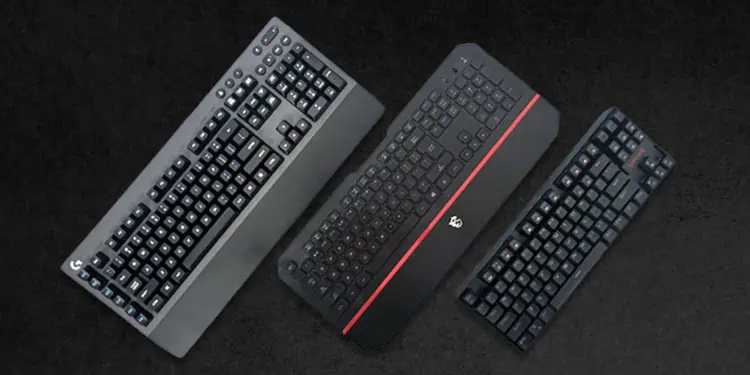If you are building a PC, it’s best to get all the parts, including the keyboard, best suited to your needs. Various types of keyboards with different sizes are available in the market. But depending on your purpose, you will get the best use out of different types of keyboards.
For instance, gamers require different keyboard layouts and sizes than programmers or accountants. The convenience of data entry is more important to accountants, portability is more important to programmers, and gamers prefer smaller keyboards with accessible functionalities.
So, here, we discuss different sizes of keyboards to help you decide what type of keyboard suits you the most.
Do the Keyboard Sizes Matter?
A full-sized keyboard usually contains multiple clusters of keys that you can divide into the following groups:
You can have keyboards of different sizes depending on which keys the keyboard keeps or omits. These keyboards are usually named by the percentage of the keys compared to the full-sized keyboard. But some have other names depending on the layout.
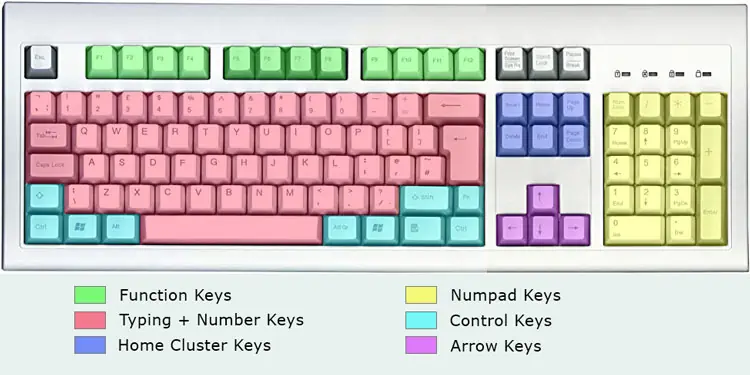
With larger keyboards, you get more options but have to forego more desk space to keep the keyboard. Apart from the availability of the keys, the spacing between the key clusters and the key placement is also different.
So, people who are used to one keyboard size may need some time to get familiar with the new keyboard. It is especially true if there is no extra gap between the key clusters.
However, you will get used to the type of keyboard that is available to you, but a certain type of keyboard has comparative advantages over others—depending upon the work you do with the keyboard.
Most Common Keyboard Sizes
Nowadays, you can hire keyboard makers to get customized keyboards with your preferred size and layout. But you’ll usually only find a few types of keyboards on the market based on their sizes.
Full Size or 100%
As you can tell from its name, a 100% keyboard contains all of the key clusters we discussed earlier. The total number of keys amounts to 104-108 keys, and most key clusters are fairly spaced.

Because these keyboards still have the Numpad keys, they are great for numerical data entry. And they also provide more options for typing and key-binding.
Compact 1800
Compact 1800 keyboards have reduced sizes without removing most of the keys. It removes the scroll lock, num lock, and pause keys and moves the Home cluster above the Numpad keys. Some keyboards may also drop some of the Home cluster keys to optimize the layout.
Then, it brings the Numpad keys closer to the typing and control keys while shifting some keys on the latter key clusters. This way, they can put the arrow keys between the Numpad and Typing + Control keys while removing most of the keyboard space.
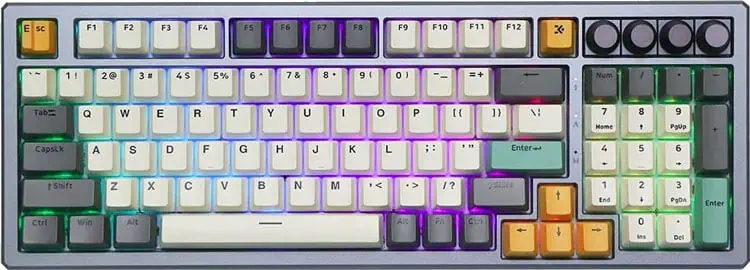
If you want to have the Numpad keys while also desiring a smaller layout, Compact 1800 is the perfect keyboard size for you.
90% or 96%
While many people also use Compact 1800 for the 90% or 96% keyboard, they are slightly different. It contains the same keys as a Compact 1800 keyboard but drops the little spacing between the four key clusters for a smaller size.

Tenkeyless (TKL) or 80%
As the name suggests, Tenkeyless (TKL) keyboards drop the Numpad and the Num lock keys altogether. If you are a gamer or someone who doesn’t perform any heavy numerical data entry tasks, it is the perfect keyboard for you.
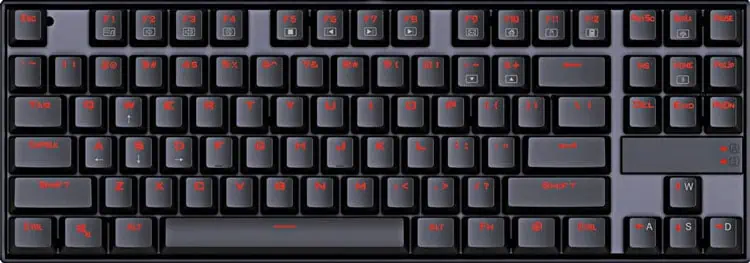
It retains the same gaps between the other key clusters as the full-sized keyboard, so you don’t need much, if not any, time to accustom yourself to this keyboard.
75%
75% keyboard is to TKL keyboard what 96% is to 100%. So basically, you first remove the lock keys and some of the Home cluster keys. And then, if you smush together the arrow and the rest of the Home cluster keys to the Typing + Control keys, you will get the 75% keyboard.
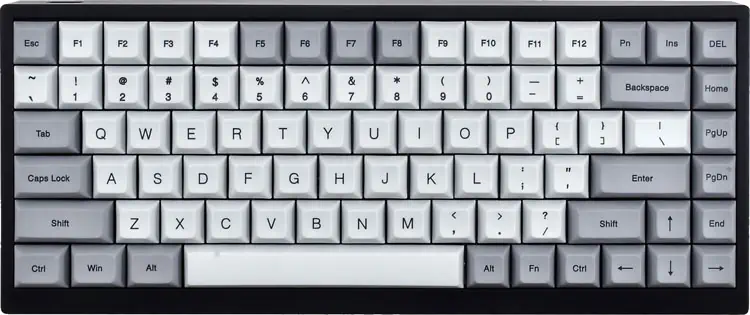
It still retains the Function keys, so if you want a more compact size but the same functionality as a TKL keyboard, go for the 75% key. However, as with the 96% keyboard, you’ll need some time to get familiar with the device.
60%
The 60% keyboard removes both the Function and the Arrow key clusters. It also integrates the functionalities of the Home cluster keys with other keys. Some keyboards also integrate the Function keys with the number keys.
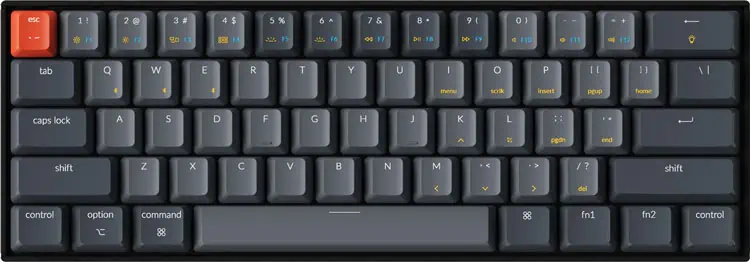
While it is very small, you need more time to be comfortable with using the integrated function and navigation keys. But it’s a good choice, especially for gamers who don’t need to do much typing.
65%
65% keyboards are 75% keyboards without the function row. It also omits some Home cluster and the Print Screen keys that you’ll usually find on the same row as the Function keys on a 75% keyboard.
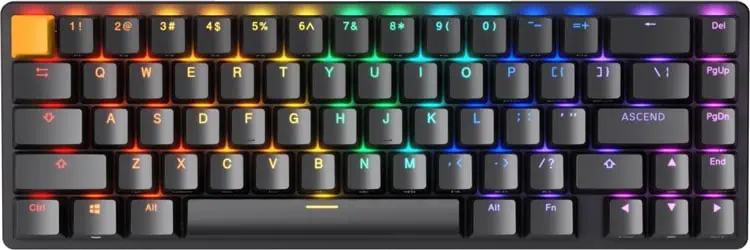
You can also think of it as the same as a 60% keyboard but with arrow keys. As you can tell, it has a similar width to the 75% keyboard but a reduced height.
50% and 40%
50% and 40% keyboards are quite similar, so we’ll talk about both at the same time. They both remove the Function keys, Numpad Keys, Number keys, and most of the Home Cluster or other keys. Depending on the manufacturer, these keyboards may not have other keys as well. For instance, some 40% or 50% keyboards have arrow keys, but others don’t.

These are the keyboards with the least amount of keys, with 50% having about 49-51 and 40% about 45-50. Most 50% keyboards have additional Macro keys on the side for adding more integrated functions to the keys. You need a lot of learning time to practice using the keys to know how to use the integrated functionalities like typing numbers and using navigation functions.
Many hardcore programmers prefer these keyboards as they are lightweight and more portable.
110%
110% keyboards add 4 more keys to the standard full-sized keyboards. The keys are media keys or macros keys and you will find them above the Numpad keys or on the left side. Apart from that, it is no different from a 100% keyboard.

Most 110% keyboards are made to look aesthetically pleasing. So you may want to use it if you are going for a full-sized keyboard.
Separate Numpad Keyboard
It is an additional keyboard you can use along with the compact keyboards we discussed earlier if you need Numpad keys occasionally. You can space apart this keyboard from your main one any way you want, so it allows a more flexible setup.
Ergonomic Keyboard’s Sizes
In addition to the linear keyboards commonly available on the market, keyboard designers and manufacturers are also producing more ergonomic varieties of keyboards.
Most such keyboards have custom sizes and layouts. For instance, some keyboards have two main key clusters (may be further divided into more clusters) on the two sides of the keyboard panel with a large space in the middle. Each key has an appropriate elevation and orientation to be more comfortable for your hand, and some keyboards also contain trackpads in the middle.
And you will also find split ergonomic keyboards with a similar key layout, but the two main clusters are split into two separate keyboard panels.
Apart from these, other types of keyboards are also available, but all these devices target comfort rather than size.
